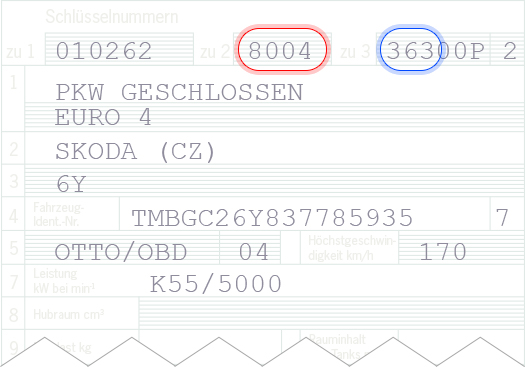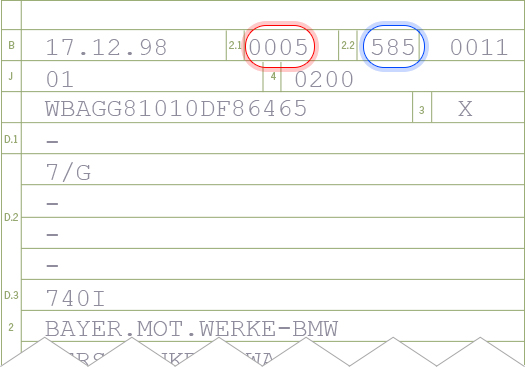
New KW Classic Dampers for Porsche 911 F-Model: Independently Adjustable Compression and Rebound Dampers for the Vintage Car by Porsche Now Available
The Porsche 911 F model is the ancestor of one of the most fascinating sports cars ever. Since the launch of the first Porsche 911 over 55 years ago, damper technology has evolved dramatically. With the new KW V3 dampers, independently adjustable in compression and rebound, all Porsche F (1963 to 1973) models, including the Porsche 911 Targa, can now be equipped.
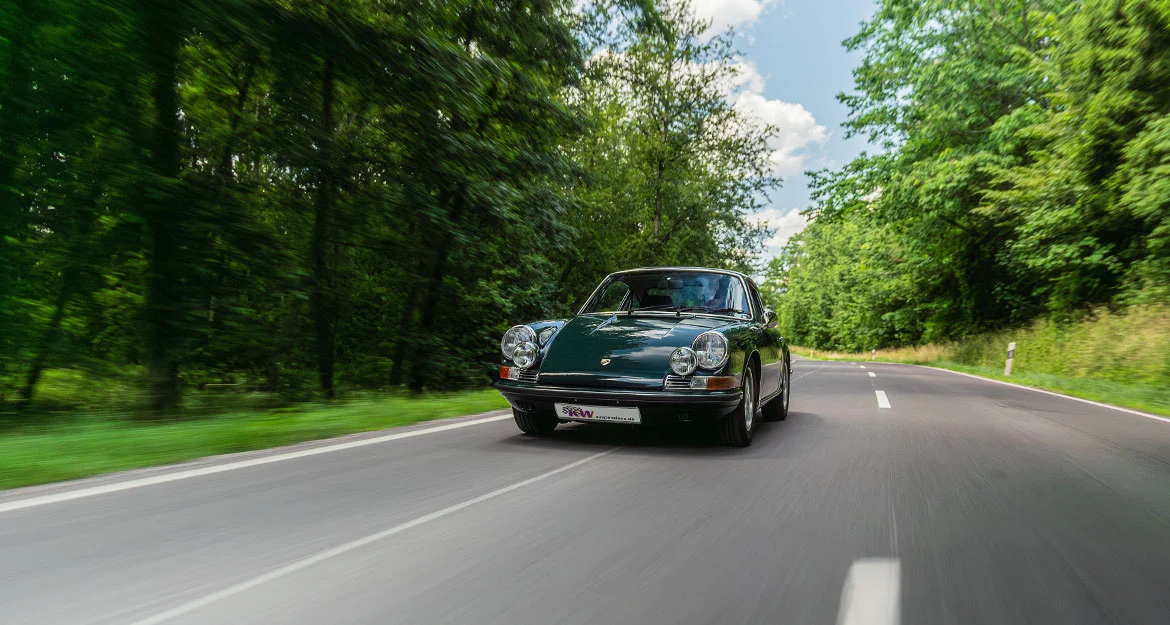
The black zinc-plated KW V3 Classic dampers for the Porsche F model have been developed for use with current tire carcasses featuring modern rubber compounds. With KW dampers, the F model drives much more neutrally and tracks more accurately, and it feels much smoother even on poorly maintained side roads. The original torsion bar springs of the Porsche 911 F model offered from 1963 to 1973 remain onboard.
No Porsche 911 F model registration in the vehicle documents is necessary as the dampers are of original length. Therefore, obtaining H-approval with the KW V3 damper set is no challenge. The independently adjustable compression and rebound KW V3 Classic dampers are available for all Porsche 911 (1963-1968), 911 L (1968), 911 T (1968-1969), 911 E (1969), 911 S (1967-1969), 911 T 2.2 (1970-1971), 911 E 2.2 (1970-1971), 911 S 2.2 (1970-1971), 911 T 2.4 (1971-1973), 911 E 2.4 (1972-1973), and 911 S 2.4 (1972-1973). When purchased and installed at a KW dealer, the certified partners provide the proven KW 5-year additional warranty on the damper kit.
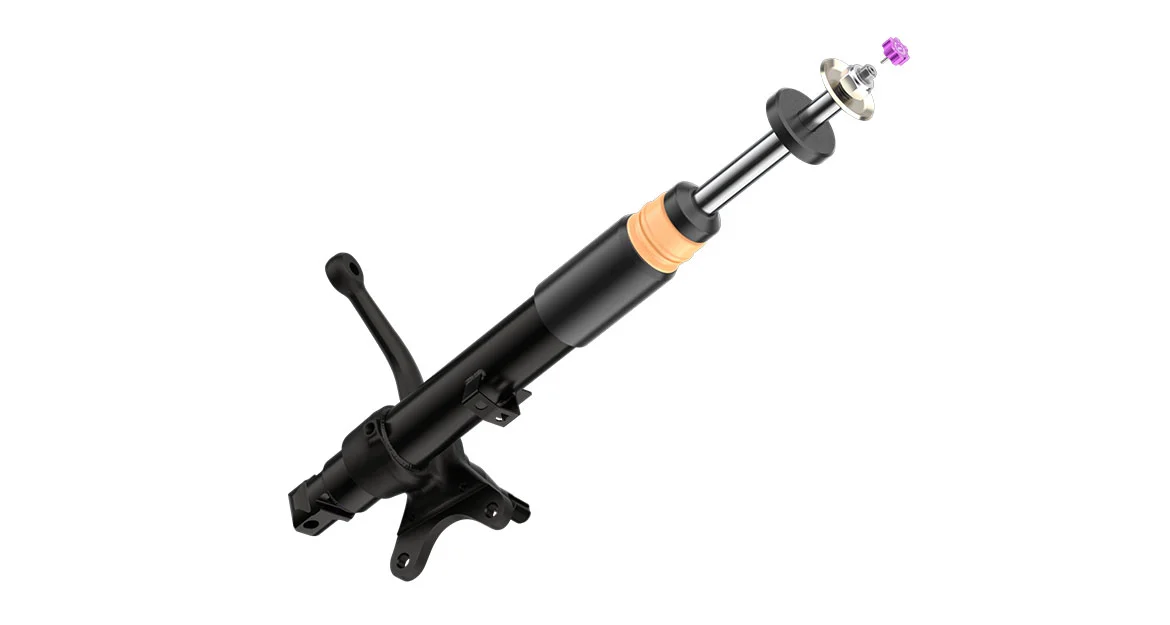
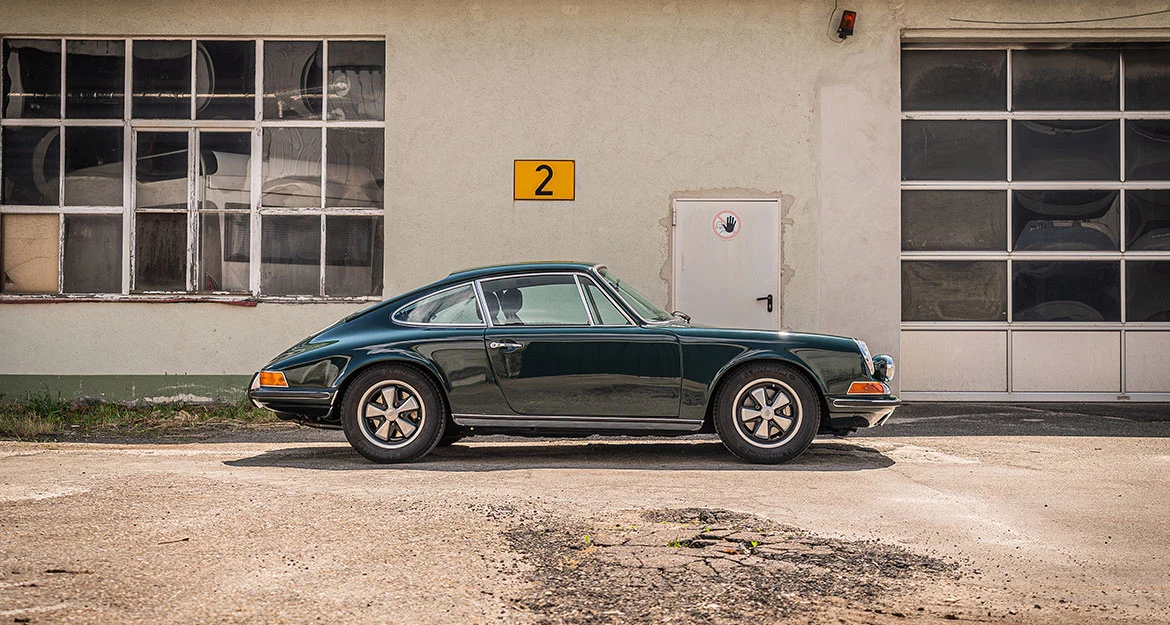
The KW Classic damper kit for the original model has been delivered and is ready for installation, including forged steering knuckles. This eliminates the labor-intensive and costly processing of the original series chassis with conventional replacement cartridges or the additional purchase of shock absorbers. If desired, the lowering can be adjusted via an adjusting screw to change the preload of the torsion bar spring and thus influence the ground clearance. The only difference: For models from 1963 to 1970, there are M12 screws on the rear axle. For models from 1970 to 1973, it's M14 screws.
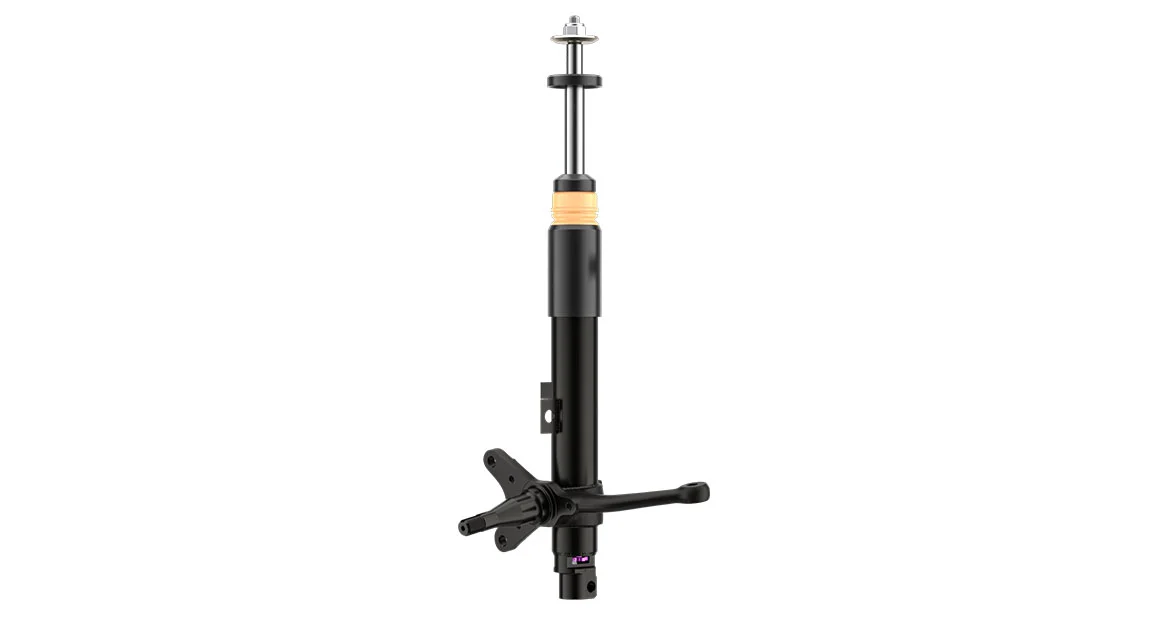
Modern Handling for the Porsche 911 Original Model – Even on Poor Roads
Thanks to the new dampers and their multi-stage damper valve assembly, all four wheels of the F model remain on the road even during brisk driving on poor side roads, and the classic Porsche handles much more neutrally. With the integrated compression and rebound adjustment wheels, it's possible to individually adjust the damper's base setup recommended by KW for the Porsche 911 original model by hand.
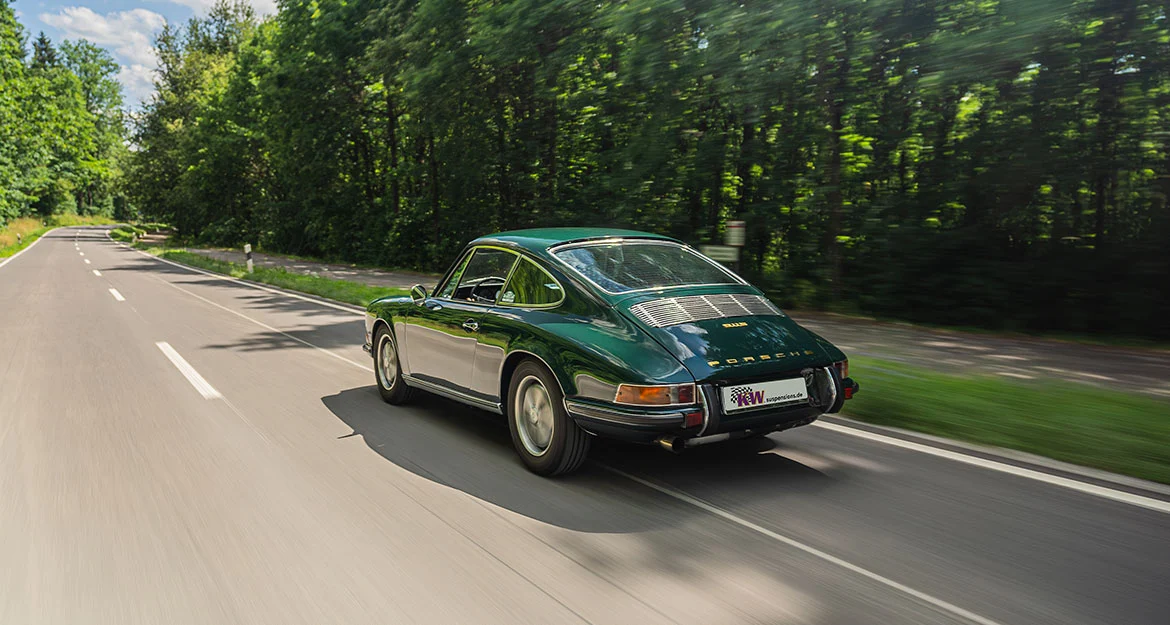
KW V3 Coilover Suspension in the Porsche F Model
For example, the 16-click adjustable rebound allows direct influence on handling characteristics and driving comfort. By independently adjusting the low-speed compression valve in twelve clicks, the Porsche Classic's driving behavior can be further modified if desired. For instance, a higher compression setting on the front axle allows for even more direct steering, while higher compression forces on the rear axle counteract oversteer.
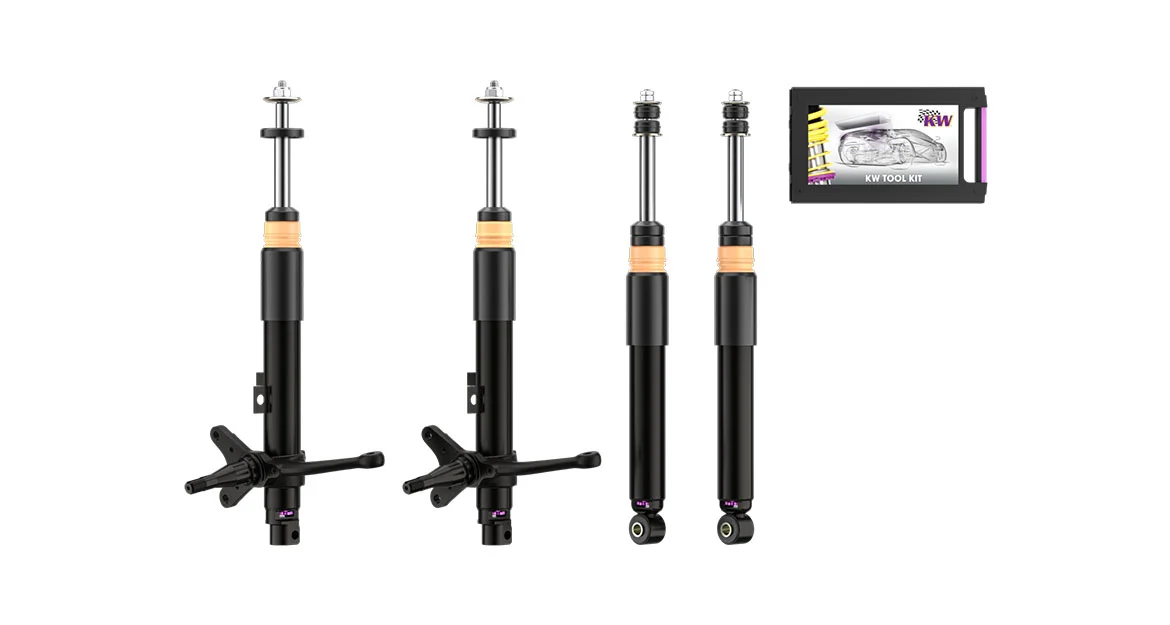
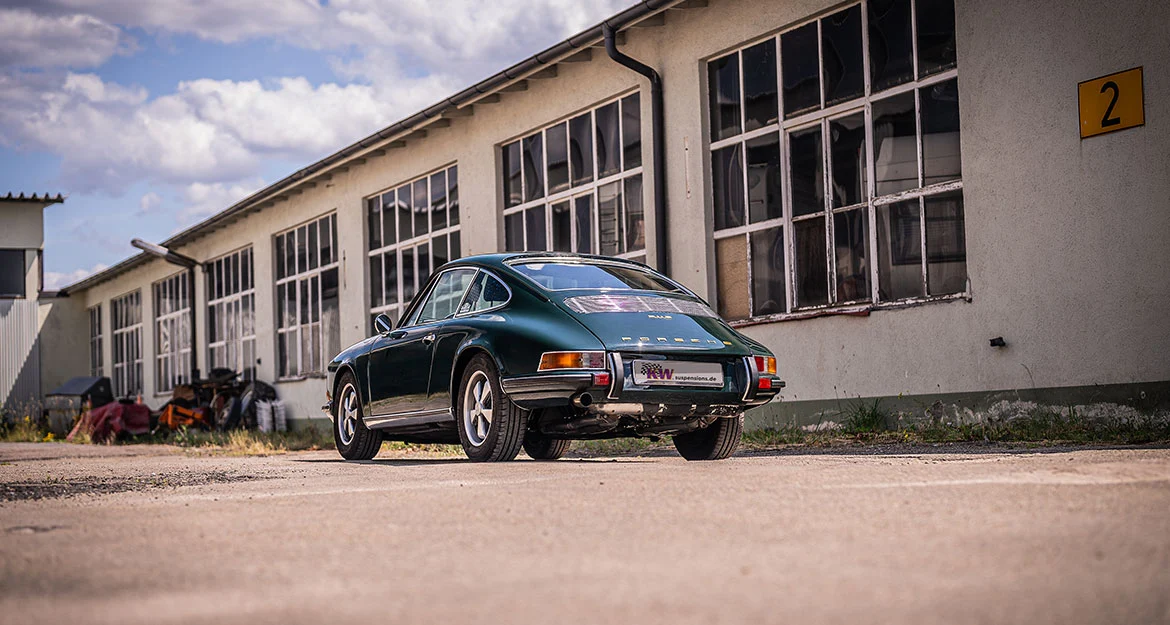
Upon sudden compression, such as driving over speed bumps, the pre-configured high-speed compression damping allows for rapid compression and prevents the body from rocking nervously. A classic Porsche 911 F model equipped with modern and adjustable KW dampers has much more direct handling than the series dampers available then. The grip on the drive axle significantly improves without increasing the tendency to oversteer early. The KW dampers provide a much safer driving feel; the front axle is less nervous. The car handles much more neutrally, even at high cornering speeds, and is easier to control.



